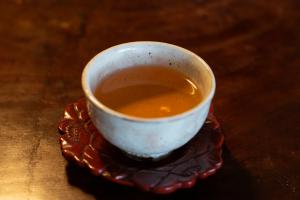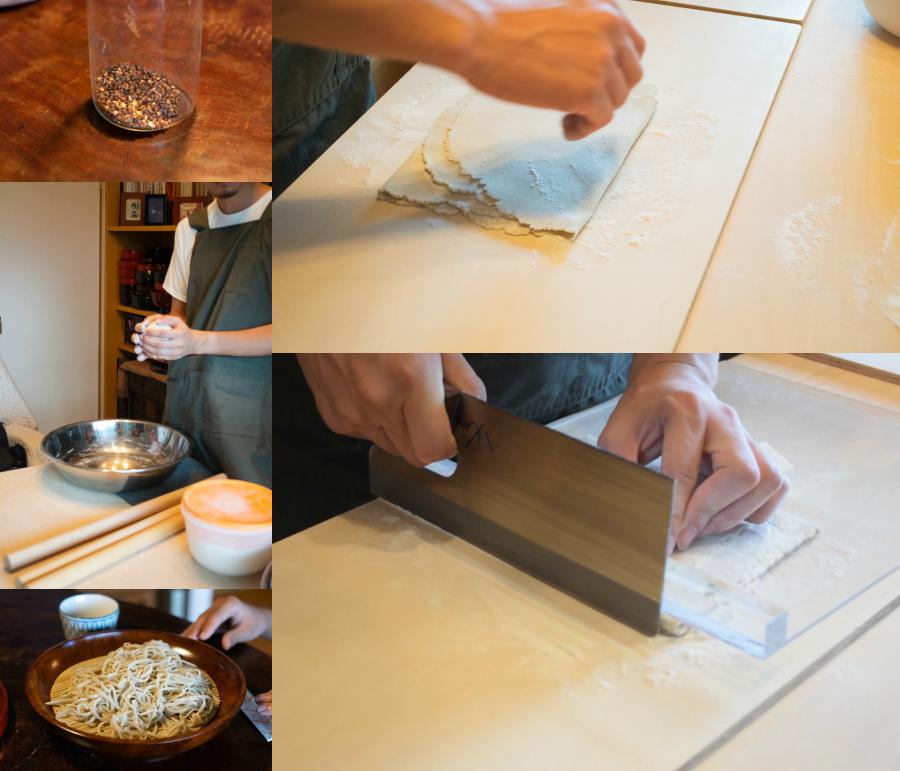Table of contents:
Soba – Japanese Buckwheat Noodles
Soba noodles are made from buckwheat flour, which is sometimes supplemented with regular wheat. Ju-wari Soba is made from 100% buckwheat and is therefore the most expensive, but also the most aromatic variety of Soba. The slightly more common version, Hachiwari-Soba, is made from 80% buckwheat and 20% regular wheat and is slightly more subtle in taste, but of course also cheaper. There are also varieties that have an even lower buckwheat content and are therefore even cheaper. These are primarily used in fast food restaurants, where Soba is available for around 2 to 5 euros.


How is Soba eaten?
The most common dish is Kake-Soba. Here, the noodles are served warm in a broth called "Dashi". This broth is made from tuna flakes, an algae, Kombu, Mirin (Japanese rice wine) and Shoyu (Japanese soy sauce) and is often garnished with chopped spring onions. Kake-Soba is often eaten in winter. It is usually served with Wasabi (often as a fresh root that you can grate yourself) and ginger.
A second common variant is Zulu-Soba. Here, the Soba noodles are served on a bamboo grid. A separate bowl is provided for the cold broth. The Soba is picked up with chopsticks, dipped in the broth and then eaten directly. Of course, as always in Japan, you slurp. Tempura is also often served with Soba.
By the way: Every bite that is picked up with chopsticks must be eaten whole. Hanging noodles are considered very rude.

Colorful variations
There is also Cha-Soba, or "Green Tea Soba". The green tea note is very subtle in terms of taste, but this Soba is green. There is also Ume-Soba, which uses a fermented, red Ume plum that gives the Soba a slight pink color. The buckwheat itself is actually gray with black spots. A popular Japanese tradition is to eat Soba before the start of the new year. This is called Toshikoshi-Soba and is said to bring financial luck in the new year. We also ate Soba every New Year in my family!

How it's done - I'm taking a Soba course
This is another Japanese course that my mother found for me. By the way, I also took a Miso course! There are different Japanese online portals where private individuals can offer a variety of services. These include cooking courses, which are popular with housewives and children. This Soba course was coincidentally led by a Japanese who had studied in Germany and therefore speaks German!
At the beginning of the course, we were first served Soba and saw how it was prepared. We drank Soba tea, which is made from roasted buckwheat. There was also a delicious buckwheat cake that our instructor's wife had baked for us.
Next, we made our own Soba: kneading the dough, rolling it out and cutting it into noodle shapes. Soba actually has to be cut very thin and evenly - not so easy to do! The thicker parts of my Soba definitely tasted different from the professionally cut Soba - but nevertheless, the course was a very interesting and informative experience for me!


Comments